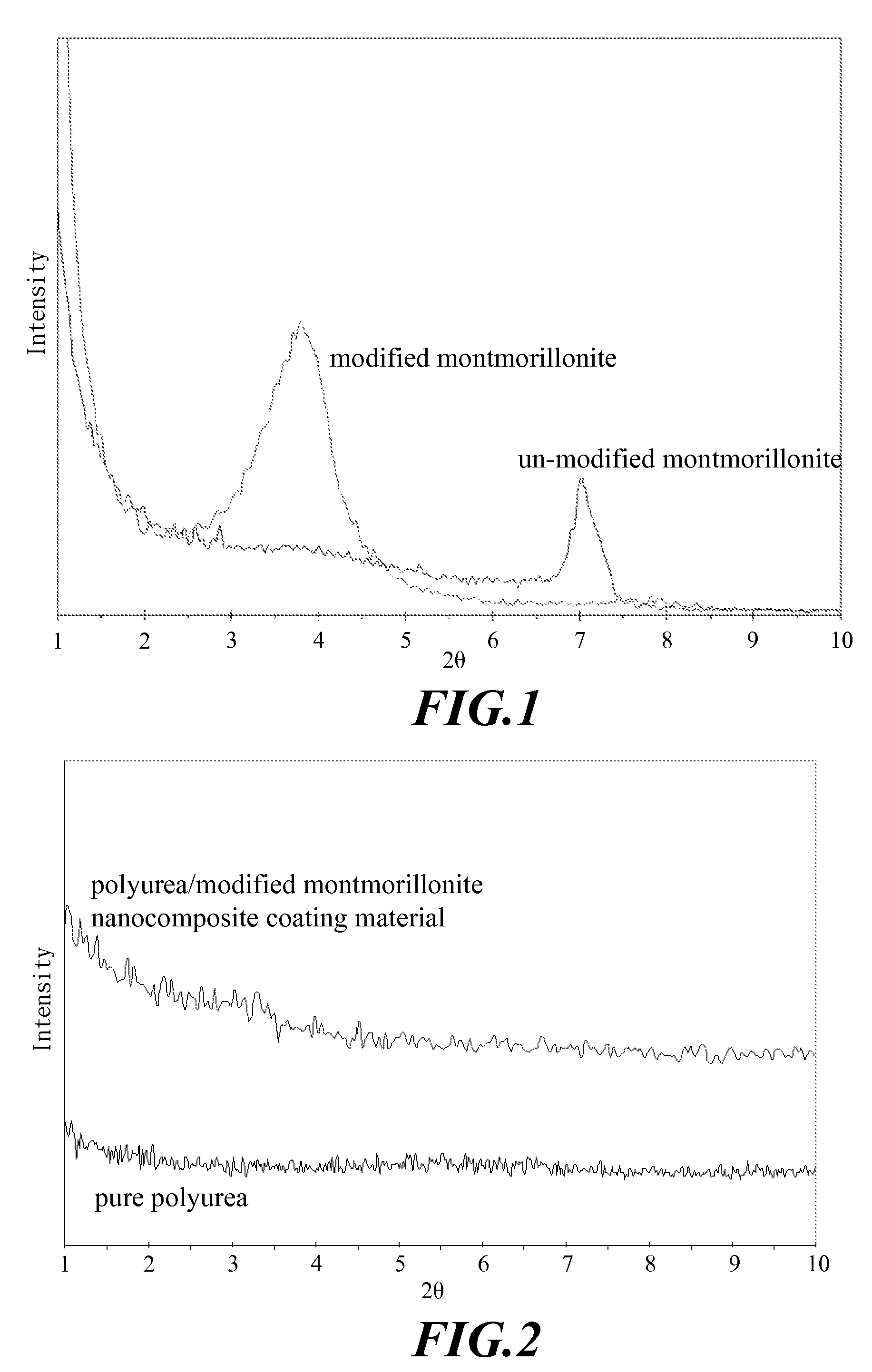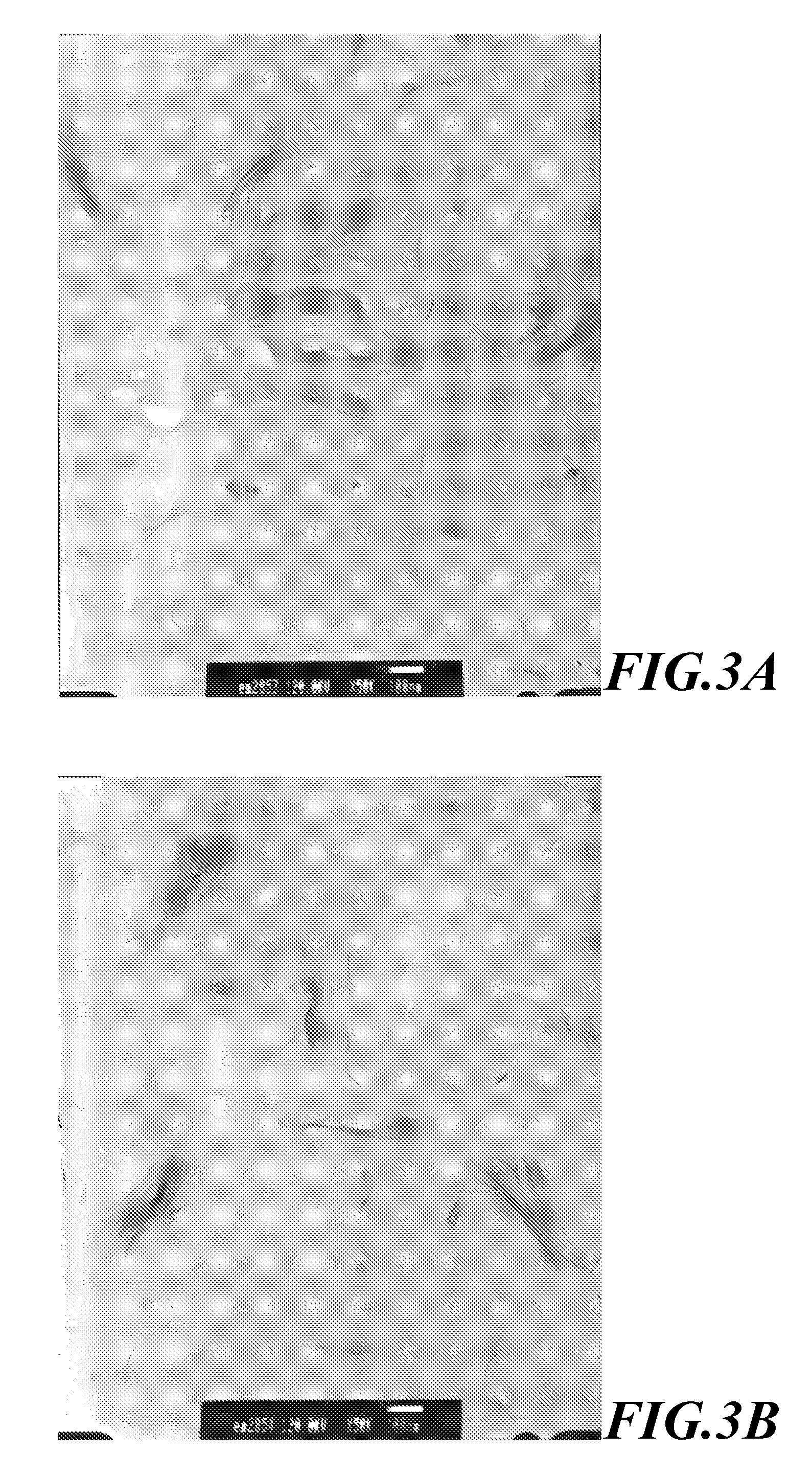Anticorrosive Nanocomposite Coating Material, and a Preparation Process Thereof
a technology of nanocomposite coating and anticorrosion, which is applied in the direction of synthetic resin layered products, chemistry apparatus and processes, layered products, etc., can solve the problems of affecting the respiratory system of humans, posing a carcinogenic risk, and being extremely hazardous to human health, so as to reduce the corrosion rate of the substrate
- Summary
- Abstract
- Description
- Claims
- Application Information
AI Technical Summary
Benefits of technology
Problems solved by technology
Method used
Image
Examples
example 1
The Preparation of Modified Montmorillonite
[0055]Conventionally, montmorillonite has been modified with a modifier based on the cationic characteristic in its interlayer space. This step is a cation exchange reaction, while the modifier selected belongs to cationic surfactant. When the cation exchange reaction is complete, the distance between layers in montmorillonite becomes more extended, which favors the intercalation of organic macromolecule therein.
[0056]A modified montmorillonite can be obtained by modifying a commercial montmorillonite with a modifier, or is a commercially available modified montmorillonite, such as from Nanocor, PAI KONG NANO TECHNOLOGY CO., LTD. To be illustrated in this example, a commercial montmorillonite was modified with a modifier.
[0057]The modification method was based on that described by Shir-joe, Liou et al. (Shir-joe, Liou and Jui-ming, Yeh, Study on the synthesis and properties of polyaniline / clay nanocomposites, master thesis 1991). Briefly, m...
example 2
Preparation of Nanocomposite Coating Material
[0058]The nanocomposite coating material was prepared by the following process:
Step 1:
[0059]amino terminated compounds and the organically modified montmorillonite obtained in Example 1 were stirred homogeneously with a mechanical stirrer to obtain a mixed material;
[0060]wherein said amino terminated compounds were compounds with terminal amino group (—NH2), and preferably its major components is a mixture of polyetheramine and a chain extender, and here, said chain extender might possess also a terminal amino group (amino terminated compounds in said mixture was available from Huntsman under the tradename of Jaffamine® D-2000, Jaffamine® T-5000, Uuilink® 4200 and Ethacure® 100);
[0061]wherein said organophilic clay comprised 2-14 wt % of the total weight of the mixed material;
Step 2:
[0062]blending the mixed material obtained in step 1 in a first roll set at a rotation speed of 150 rpm and roll gap of 25˜30 μm, then in a second roll set at...
example 3
Characterization of the Nanocomposite Coating Material
[0069]In this example, the nanocomposite coating material obtained as described in the above Example 2 was characterized at first by an X-ray diffraction instrument (XRD) to identify the nano-scale nature of the modified montmorillonite and the nanocomposite coating material. Then, transmission electron microscopy (TEM) was used to identify the nano-scale nature of the composite coating material, and the uniform dispersion of the modified montmorillonite in the polyurea. Said XRD and TEM characterization methods were based on the methods described previously by Shir-joe, Liou et al. (Shir-joe, Liou and Jui-ming, Yeh, Study on the synthesis and properties of polyaniline / clay nanocomposites, master thesis 1991). Briefly, described as follows:[0070]1. X-ray diffraction analysis (XRD) of the modified montmorillonite and the nanocomposite coating material
[0071]At first, the powdered sample was ground with an agate mortar to a finer mi...
PUM
| Property | Measurement | Unit |
|---|---|---|
| interlayer distance | aaaaa | aaaaa |
| particle diameter | aaaaa | aaaaa |
| interlayer distance | aaaaa | aaaaa |
Abstract
Description
Claims
Application Information
 Login to View More
Login to View More - R&D
- Intellectual Property
- Life Sciences
- Materials
- Tech Scout
- Unparalleled Data Quality
- Higher Quality Content
- 60% Fewer Hallucinations
Browse by: Latest US Patents, China's latest patents, Technical Efficacy Thesaurus, Application Domain, Technology Topic, Popular Technical Reports.
© 2025 PatSnap. All rights reserved.Legal|Privacy policy|Modern Slavery Act Transparency Statement|Sitemap|About US| Contact US: help@patsnap.com



